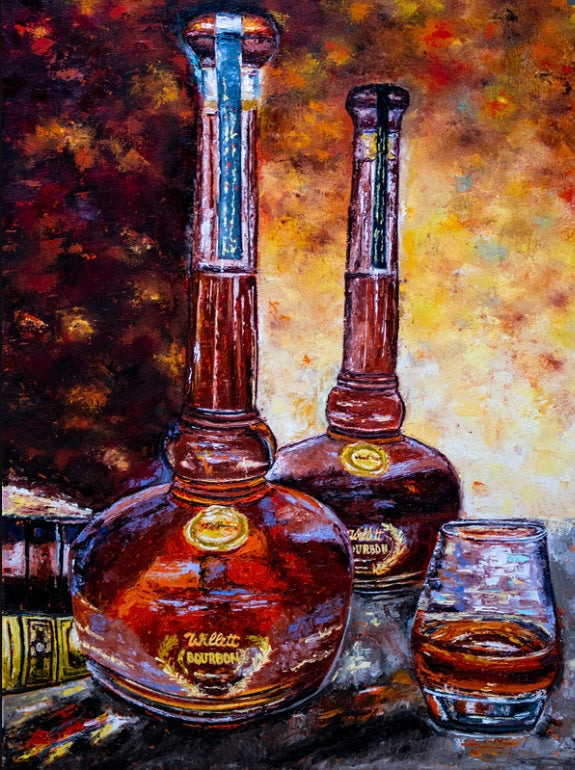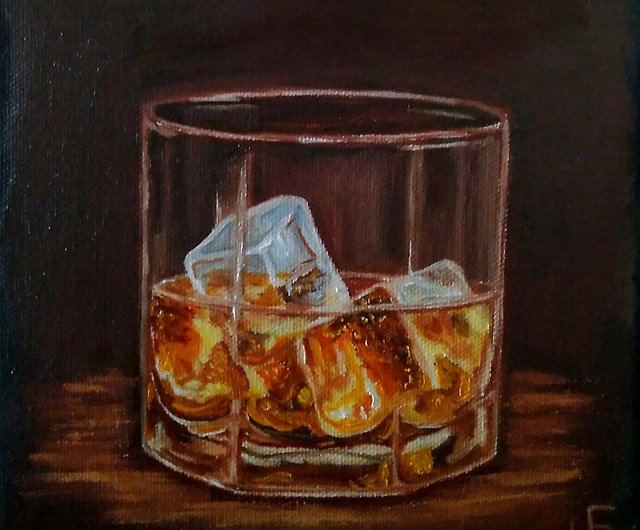Limited Edition: Discover Exclusive Bourbon Art Pieces for Collectors
Limited Edition: Discover Exclusive Bourbon Art Pieces for Collectors
Blog Article
The Relevance of Whiskey Art in Celebrating Heritage and Workmanship in the Beverage Industry
The detailed connection between bourbon art and the event of heritage and workmanship within the beverage industry can not be overstated. Via thoughtfully designed containers and tags, scotch brands envelop their historic origins and the artisanal skills that specify their production approaches. This creative measurement not only improves market appeal but likewise acts as a channel for social narration, promoting a deeper connection in between the craft and the customer. As we check out the numerous elements of this subject, intriguing questions regarding the effect of modern-day patterns on standard methods develop, motivating further exam.
The Historical Origins of Whiskey
At the heart of whiskey's attraction lies an abundant tapestry of historical origins that trace back to old civilizations. The origins of bourbon can be connected to the distillation techniques of the Sumerians and Babylonians around 2000 BCE, where early forms of fermented grain beverages started to emerge. It was in the Middle Ages that the art of distillation advanced dramatically, particularly in Ireland and Scotland, leading to the production of whiskey as we recognize it today.
The term "whiskey" itself originates from the Gaelic word "uisce beatha," implying "water of life." This expression highlights the cultural relevance of whiskey in Celtic societies, where it was often connected with rituals, celebrations, and communal bonding. By the 15th century, purification became an identified craft within monastic areas, leading the method for the facility of lawful distilleries.
As profession paths expanded, whiskey's appeal expanded, transcending regional limits and catching the interest of lovers worldwide. Realism Art. This historical journey mirrors not only the craftsmanship behind bourbon manufacturing but also its indispensable function in social and social contexts, noting it as a significant drink throughout history
Artistic Expression in Branding
Bourbon branding stands as a compelling crossway of creativity and business, where aesthetic identity plays an essential role fit consumer assumption. The aesthetics of whiskey tags, packaging, and advertising products mirror not just the brand's tale but also its core values and heritage. Via creative expression, distilleries communicate a narrative that reverberates with consumers, evoking emotions and triggering links.
Making use of color, typography, and images in branding serves to separate products in a saturated market. Conventional concepts might evoke a sense of credibility and workmanship, while contemporary styles can represent innovation and forward-thinking. This tactical artistic instructions enhances brand acknowledgment and loyalty, permitting customers to build an individual relationship with the bourbon they pick.
In addition, artistic expression in branding typically works as an event of regional heritage. Distilleries frequently incorporate regional icons or historical references right into their styles, creating a local color that invites consumers to take part in a more comprehensive cultural experience. Ultimately, the artistry behind bourbon branding not only boosts aesthetic allure but likewise enhances the general narrative of the brand, cultivating a deeper appreciation for the workmanship and heritage ingrained in each bottle.
Workmanship in Container Style
The virtuosity evident in whiskey branding expands past visual identity to incorporate the workmanship involved in bottle layout. Each container functions as a vessel not just for the spirit within, however also for the tale it informs about its tradition, beginning, and quality. The design process calls for precise interest to detail, as aspects such as shape, closure, and product contribute significantly to the general assumption of the scotch.
Craftsmanship in bottle layout entails choosing high-grade glass that can improve the whiskey's color and clearness, while additionally offering a responsive experience for the consumer. The shape of the container have to be both functional and aesthetically appealing, commonly showing the heritage of the brand name. Lots of distilleries go with have a peek here unique forms or embossed logo designs that evoke a feeling of credibility and background.
Additionally, the label layout and typography play a critical duty in communicating the brand name's story. Realism Art. A well-crafted bottle not just captivates the customer's eye but additionally reinforces the brand's commitment to quality and custom. In this method, the workmanship of bottle design comes to be a vital facet of the whiskey experience, combining artistry with an extensive regard for heritage
Cultural Importance of Scotch Art
Celebrating custom and workmanship, the cultural relevance of scotch art transcends simple appearances, linking with the historical and social stories of the regions from which it stems. Each bottle serves as a canvas, portraying the unique tales, mythology, and traditions that have actually shaped local whiskey-making practices. The intricate layouts usually show the heritage of the distillers, incorporating signs and concepts that resonate with the society and worths of their communities.

In addition, bourbon art plays a crucial duty in public celebrations and celebrations, working as a concrete web link in between individuals and their shared experiences. By appreciating the creativity in whiskey product packaging, customers grow a deeper understanding and regard for the craft, ultimately enhancing their pleasure of the drink itself.
Modern Trends in Whiskey Presentation
In recent times, the presentation of bourbon has actually advanced to mirror contemporary preferences and fads while still recognizing typical craftsmanship - Whiskey Art. Distilleries are increasingly focusing on aesthetic aspects that enhance the total drinking experience, bridging the void between heritage and modernity
Ingenious container styles have emerged, typically incorporating sustainable materials and imaginative labels that tell engaging stories. Many brands currently collaborate with regional musicians, instilling their items with unique aesthetic expressions that reverberate with read consumers. Furthermore, limited-edition releases are commonly packaged in collectible containers, including worth and allure for connoisseurs.

Verdict
To conclude, scotch art acts as an essential conduit for revealing read here the heritage and craftsmanship intrinsic in the beverage sector. Through detailed branding, ingenious container designs, and culturally significant artistic components, whiskey brand names successfully recognize their traditions and get in touch with customers. This creative narrative not only raises the admiration of whiskey but likewise reinforces area identity and satisfaction among producers. Ultimately, bourbon art plays an essential function in preserving and celebrating the abundant cultural tapestry of whiskey-making.


Craftsmanship in container layout involves choosing high-quality glass that can enhance the scotch's color and clearness, while also providing a tactile experience for the consumer. In this means, the workmanship of bottle design comes to be a crucial aspect of the whiskey experience, merging virtuosity with a profound respect for heritage.
In final thought, bourbon art serves as an essential avenue for expressing the heritage and workmanship fundamental in the drink sector.
Report this page